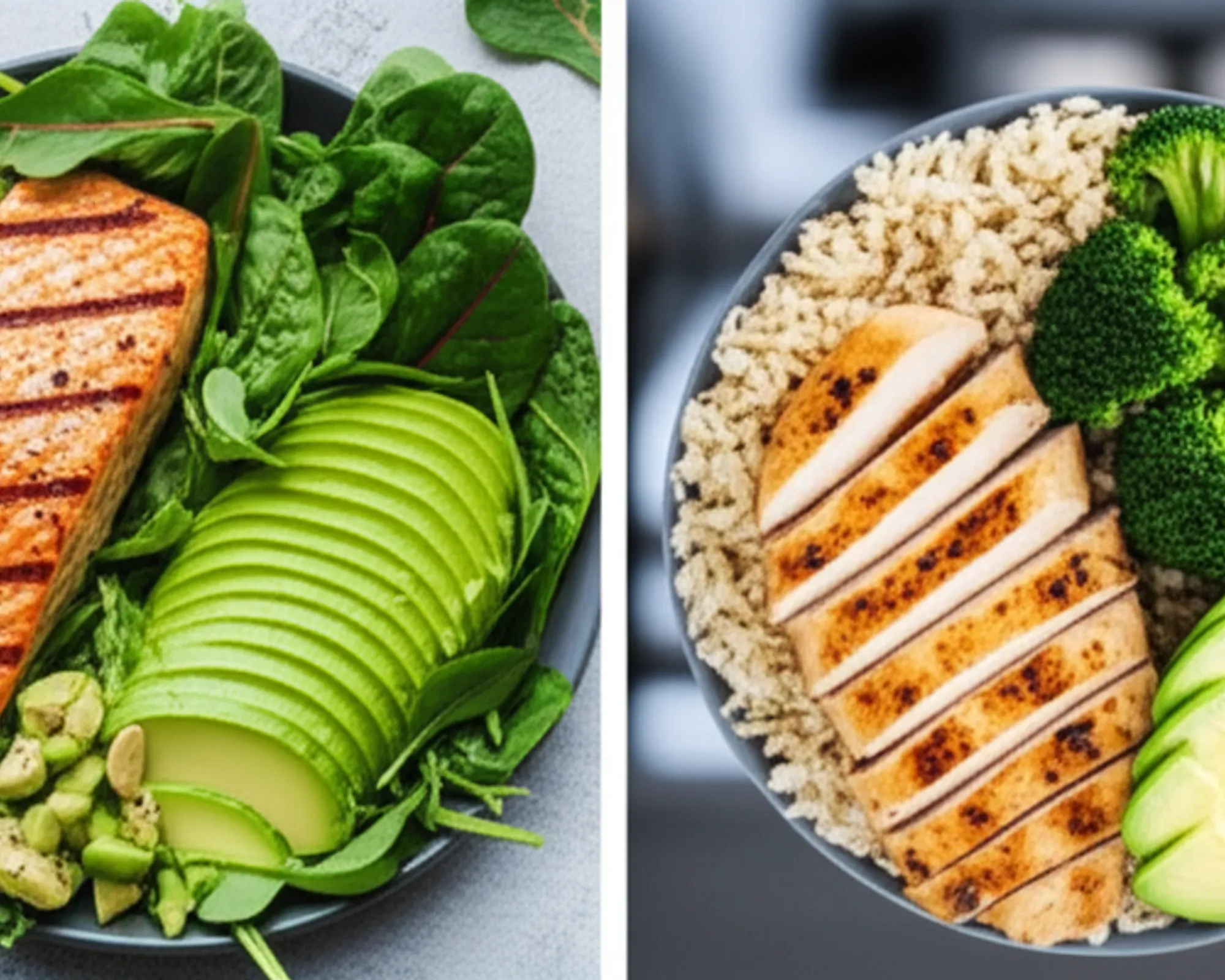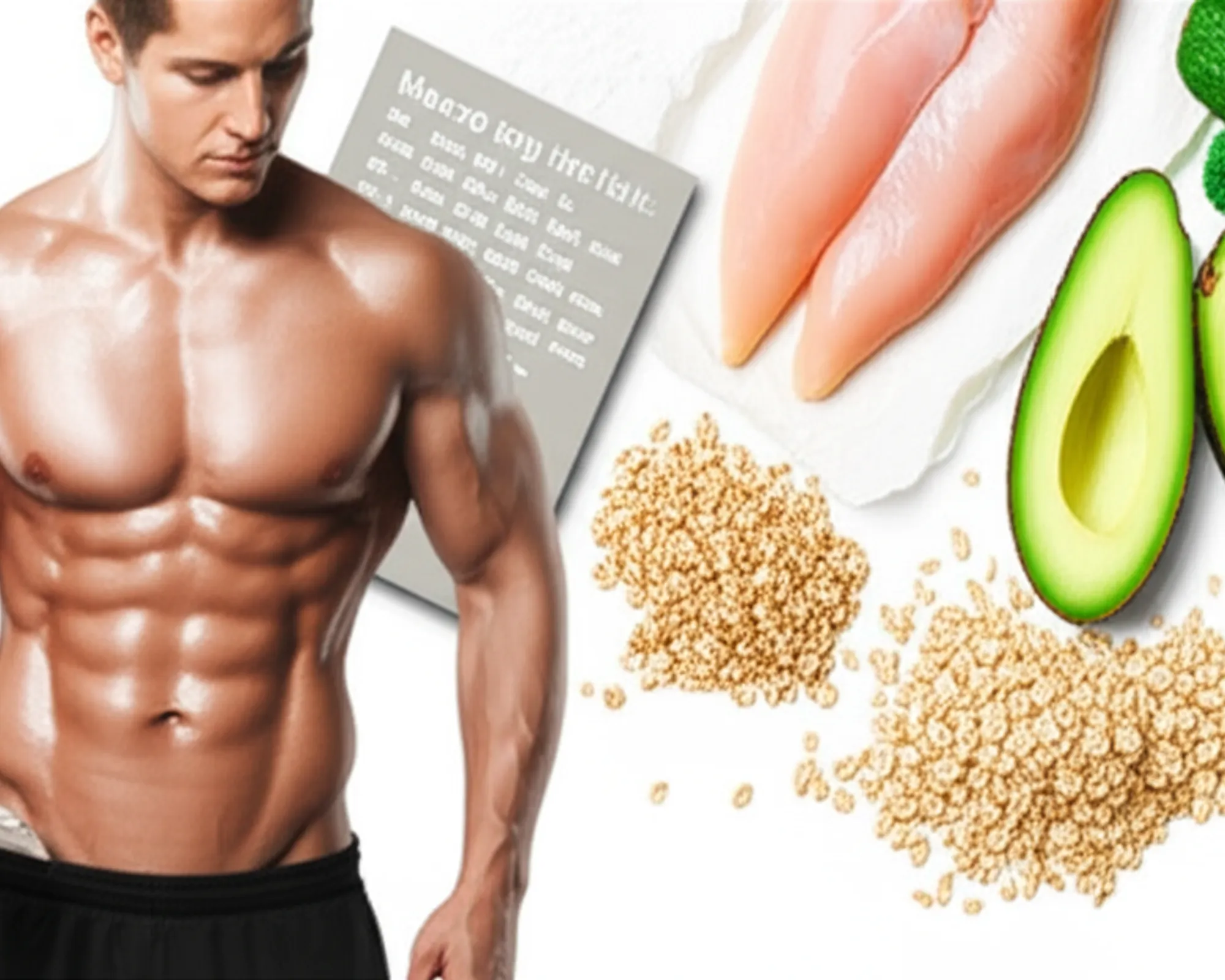Best Full-Body Gym Workout for Beginners

Embarking on a fitness journey can feel overwhelming, especially when you step into a gym for the first time. The rows of intimidating machines, the clanking of weights, and the seemingly complex routines can be daunting. But what if we told you there's a simple, incredibly effective, and beginner-friendly approach to kickstart your fitness goals? Enter the full-body gym workout.
For those new to exercise, a full-body routine is often the gold standard. Instead of dedicating separate days to individual muscle groups (like 'chest day' or 'leg day'), you train all major muscle groups in a single session. This approach isn't just time-efficient; it’s highly effective for building foundational strength, improving muscle coordination, and accelerating fat loss. It lays a comprehensive groundwork for all future fitness endeavors.
Why a Full-Body Workout for Beginners?
Why is this approach so beneficial for newcomers? Firstly, it allows for more frequent training of each muscle group throughout the week, typically 2-3 times, leading to faster strength and muscle development compared to once-a-week split routines. Secondly, it helps build a balanced physique and reduces the risk of imbalances that can arise from focusing too much on certain areas. Thirdly, it maximizes calorie burn during and after your session and improves overall cardiovascular health, making it a powerful tool for weight management and general well-being.
Foundational Principles for Success
Before we dive into the workout itself, it's crucial to understand a few foundational principles that will ensure your success, safety, and long-term adherence to your new fitness routine.
- 1. Focus on Form, Not Weight: This principle cannot be stressed enough, especially for beginners. Your muscles need to learn the correct movement patterns before they can handle significant loads. Prioritizing perfect form means engaging the right muscles, reducing the risk of injury, and ensuring that every repetition contributes effectively to your strength and muscle growth. Start with bodyweight or very light weights, and only increase the load when you can maintain excellent form throughout your sets.
- 2. Start Light and Progress Gradually: The concept of progressive overload is fundamental to all strength training. It means continually challenging your muscles by gradually increasing the demands placed upon them. For beginners, this could mean adding a small amount of weight, performing an extra rep or set, or even reducing rest times. The key is gradual, sustainable progress – small, consistent gains add up over time to significant results without overwhelming your body.
- 3. Listen to Your Body: While some muscle soreness (DOMS - Delayed Onset Muscle Soreness) is common after a good workout, particularly when new to exercise, distinguish it from sharp or persistent pain. Pain is your body's way of signaling that something isn't right. Push through discomfort, but never through pain. It’s always better to reduce the weight, adjust your form, or take an extra rest day than to risk an injury that could set back your progress for weeks or months.
- 4. Consistency is Key: In fitness, consistency trumps intensity. It's far more effective to complete two to three well-executed full-body workouts consistently each week than to have one super-intense session followed by weeks of inactivity. Regularity builds habit, reinforces muscle memory, and ensures steady progress. Make your gym sessions a non-negotiable part of your weekly routine, even if some days you feel less motivated.
- 5. Don't Skip Warm-up and Cool-down: These often-overlooked components of a workout are vital for your long-term success and injury prevention. A proper warm-up increases blood flow to your muscles, elevates your core body temperature, and prepares your joints for movement, significantly reducing the risk of strains or tears. A cool-down, on the other hand, helps bring your heart rate down gradually, promotes flexibility, and can aid in reducing post-workout muscle stiffness by flushing out metabolic byproducts.
Your Beginner Full-Body Gym Workout Plan
Here’s a comprehensive full-body gym workout designed specifically for beginners. Perform this routine 2-3 times per week, with at least one rest day in between. Remember, prioritize proper form over the amount of weight lifted.
Warm-up (5-10 minutes):
Prepare your body for exercise with dynamic movements that increase blood flow and mobility.
- Light Cardio: 5 minutes on a treadmill (brisk walk/light jog), elliptical, or stationary bike at a moderate, comfortable pace.
- Arm Circles: 10-15 forward, 10-15 backward. Start small and gradually increase the size of the circles.
- Leg Swings: 10-15 forward/backward per leg, holding onto something for balance if needed.
- Torso Twists: 10-15 gentle twists side to side, keeping your hips relatively stable.
- Bodyweight Squats: 10-15 slow, controlled repetitions to activate your lower body.
The Main Workout (3 Sets of 10-12 Reps, Rest 60-90 Seconds Between Sets):
Aim for 3 sets of 10-12 repetitions for each exercise. Choose a weight that allows you to complete all reps with good form, feeling challenged by the last few repetitions but not completely exhausted.
- 1. Barbell Squats (or Goblet Squats/Bodyweight Squats): The squat is often hailed as the king of all exercises for a reason. It's a compound movement that engages multiple major muscle groups simultaneously, including your quadriceps, hamstrings, and glutes. Mastering the squat will build incredible lower body strength and improve overall functional movement, which is essential for everyday activities.
How to: Stand with feet shoulder-width apart, toes slightly out. Keeping your chest up and back straight, lower your hips as if sitting into a chair until your thighs are parallel to the floor (or as deep as comfort allows with good form). Push through your heels to return to the start.
Beginner Tip: Start with bodyweight or holding a dumbbell at your chest (Goblet Squat) for better balance and form. If using a barbell, begin with just the bar. - 2. Dumbbell Bench Press (or Push-ups): The dumbbell bench press is a fantastic exercise for developing your chest, shoulders, and triceps. Unlike the barbell bench press, dumbbells allow for a greater range of motion and help identify and correct muscle imbalances between your left and right sides, making it an excellent choice for beginners to build foundational pressing strength.
How to: Lie on a flat bench, holding a dumbbell in each hand, palms facing each other (or slightly rotated). Lower the dumbbells slowly to the sides of your chest, feeling a stretch in your chest muscles, then push them back up to the starting position, squeezing your chest at the top.
Beginner Tip: If dumbbells are too challenging, perform push-ups on your knees or against a wall until you build sufficient strength. - 3. Lat Pulldowns (or Dumbbell Rows): Developing a strong back is crucial not only for a balanced physique but also for improving posture and preventing injuries. The lat pulldown effectively targets your latissimus dorsi, the large muscles of your back, while dumbbell rows offer a great unilateral option to build strength and symmetry.
How to (Lat Pulldown): Sit at the lat pulldown machine, grasp the bar with a wide overhand grip. Pull the bar down to your upper chest, squeezing your shoulder blades together. Slowly release back up, controlling the weight.
How to (Dumbbell Row): Bend at your hips, keeping your back straight and one hand on a bench for support. Hold a dumbbell in the other hand. Pull the dumbbell up towards your chest, squeezing your shoulder blade, then slowly lower.
Beginner Tip: Dumbbell rows are an excellent alternative if the lat pulldown machine is unavailable or intimidating. - 4. Overhead Press (Dumbbell or Barbell): A strong set of shoulders is vital for everyday lifting, carrying, and overhead movements. The overhead press, whether performed with dumbbells or a barbell, builds strength and stability in your deltoids and triceps, contributing significantly to your upper body pushing power and overall functional strength.
How to: Stand or sit with a dumbbell in each hand at shoulder height, palms facing forward. Press the dumbbells straight overhead until your arms are fully extended, ensuring your core is braced. Slowly lower them back to the starting position with control.
Beginner Tip: Start with lighter dumbbells to master the movement before progressing to a barbell, which requires more stability. - 5. Plank: Often underestimated, the plank is one of the most effective exercises for building core strength and stability. It engages your entire core, including your abdominals, obliques, and lower back, without putting strain on your spine, making it ideal for beginners to develop a solid foundation for all other lifts and daily activities.
How to: Get into a push-up position, but rest on your forearms instead of your hands. Keep your body in a straight line from head to heels, engaging your core and glutes. Avoid letting your hips sag or pike up too high. Hold for 30-60 seconds.
Beginner Tip: If a full plank is too difficult, start on your knees, maintaining the straight body line from head to knees, or try holding for shorter durations.
Cool-down (5-10 minutes):
Static stretches to improve flexibility, reduce muscle soreness, and aid in recovery. Hold each stretch for 20-30 seconds, breathing deeply.
- Hamstring Stretch: Sit on the floor, extend one leg, and reach for your toes.
- Tricep Stretch: Reach one arm overhead, bend at the elbow, and gently pull your elbow with your other hand.
- Chest Stretch: Interlace your fingers behind your back and gently lift your arms.
- Quad Stretch: Stand and pull one heel towards your glutes, holding your ankle.
- Child's Pose: Kneel on the floor, sit back on your heels, and extend your arms forward, resting your forehead on the floor.
Tips for Long-Term Success
Beyond the workout itself, several factors contribute to your overall progress and well-being. Incorporating these habits will amplify your results and keep you motivated.
- Hydration: Water plays a critical role in almost every bodily function, including muscle contractions, nutrient transport, and temperature regulation. Being adequately hydrated will optimize your performance in the gym, prevent fatigue, and aid in recovery. Aim to drink water consistently throughout the day, not just during your workout.
- Nutrition: What you eat is just as important as how you train. A balanced diet provides the energy you need to perform and the nutrients required for muscle repair and growth. Focus on whole, unprocessed foods: lean proteins (chicken, fish, legumes) for muscle building, complex carbohydrates (oats, brown rice, whole grains) for sustained energy, and healthy fats (avocado, nuts, seeds) for overall health. Don't underestimate the power of proper fuel!
- Rest and Recovery: Muscles don't grow in the gym; they grow and repair during rest. Adequate sleep (7-9 hours per night for most adults) is crucial for hormonal balance, muscle recovery, and mental rejuvenation. Incorporate active recovery days, like light walking or gentle stretching, to keep blood flowing and aid in removing waste products from your muscles.
- Track Your Progress: Keeping a log of your workouts is one of the most powerful motivational tools available. Note down the exercises you did, the weights used, and the number of sets and repetitions. This allows you to visually track your improvements, celebrate milestones, and intelligently apply progressive overload by knowing exactly what you need to beat from your last session.
- Consider Professional Guidance: While this guide provides a solid starting point, a few sessions with a certified personal trainer can be incredibly beneficial for beginners. They can assess your individual needs, refine your form, introduce variations, and build a personalized plan, giving you the confidence and correct foundation to train safely and effectively on your own.
Conclusion
Embarking on a full-body gym workout as a beginner is a fantastic decision. It's an efficient, effective, and sustainable way to build a strong foundation, improve your overall health, and cultivate lifelong fitness habits. Remember to be patient, consistent, and celebrate every small victory, no matter how minor it seems. Your fitness journey is a marathon, not a sprint, and every step forward counts. Enjoy the process, and soon you'll be amazed at what your body can achieve!


